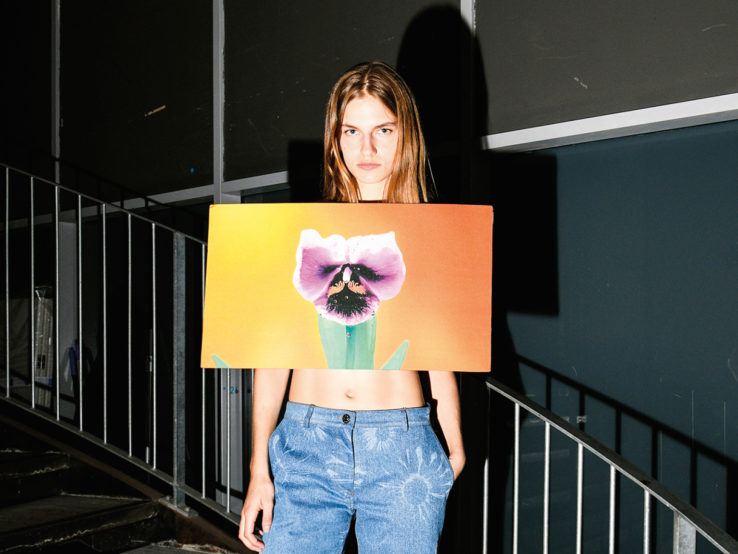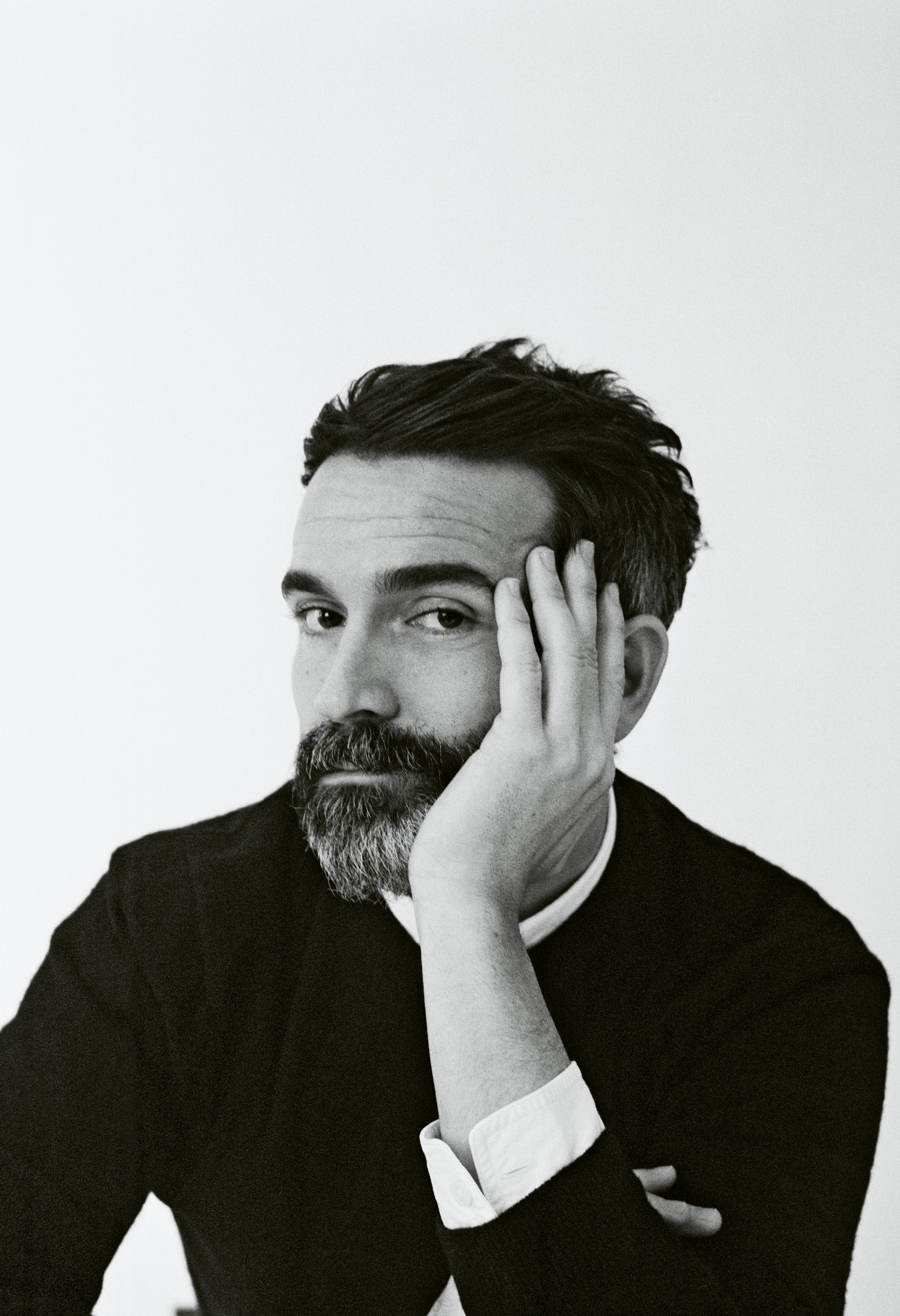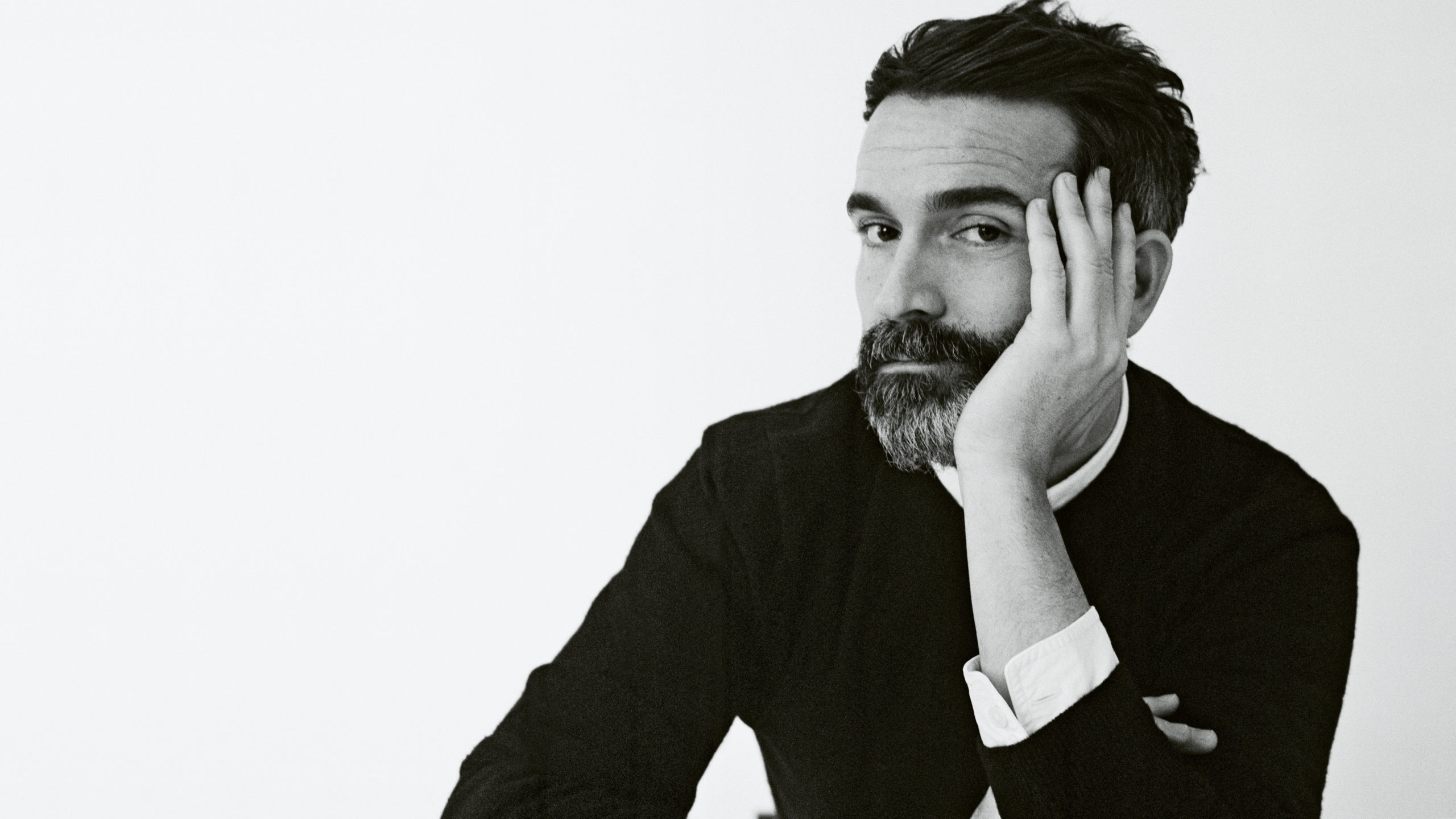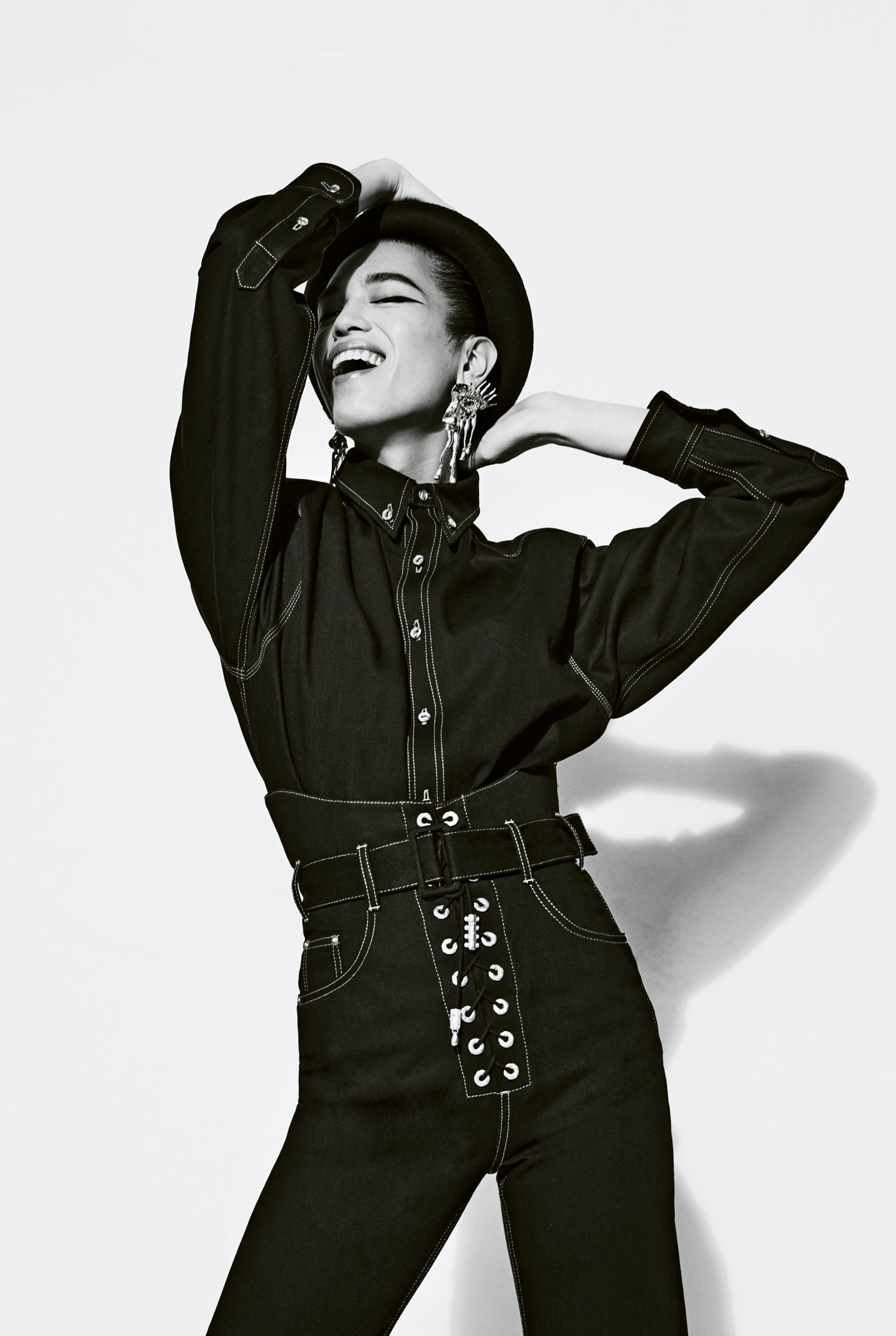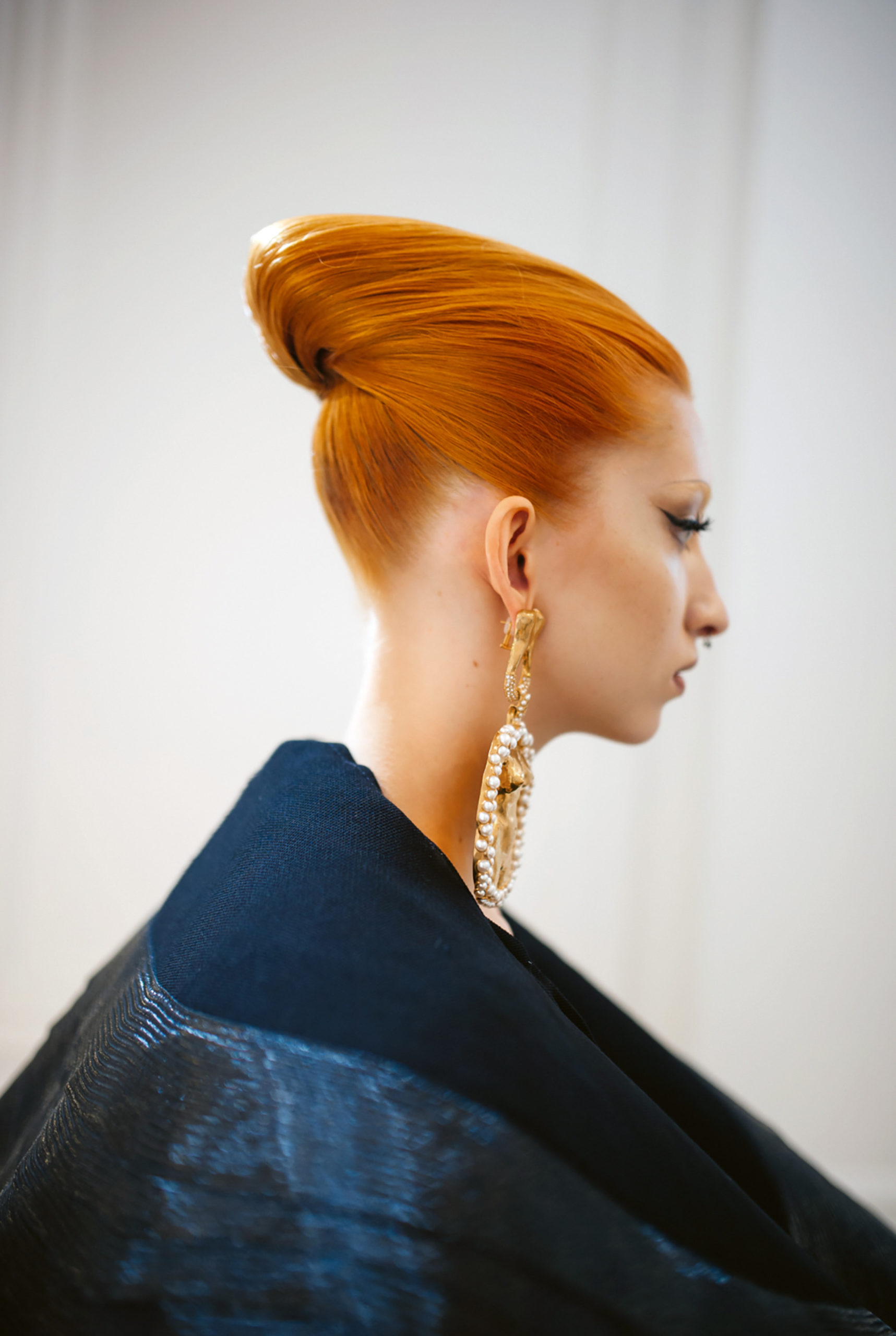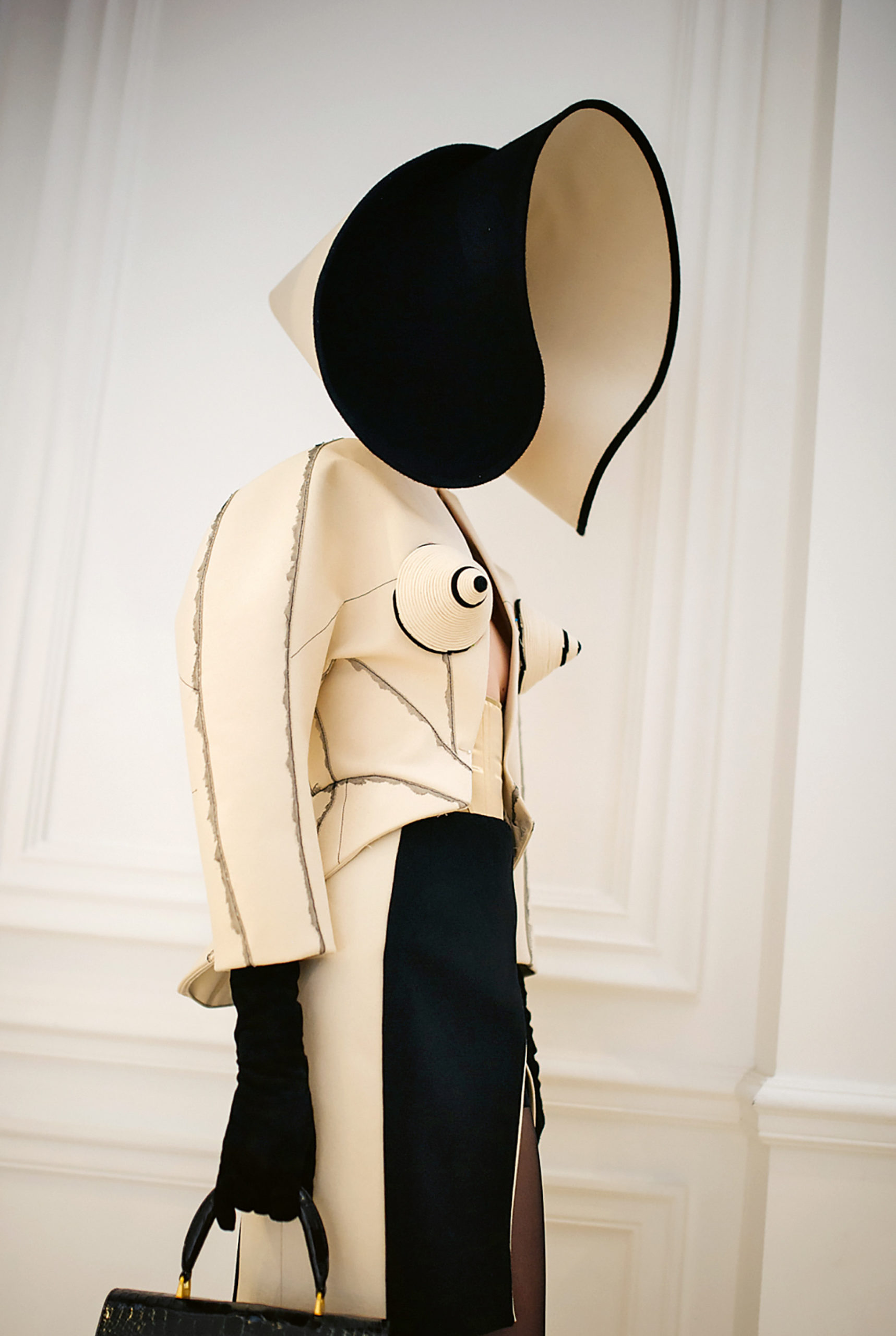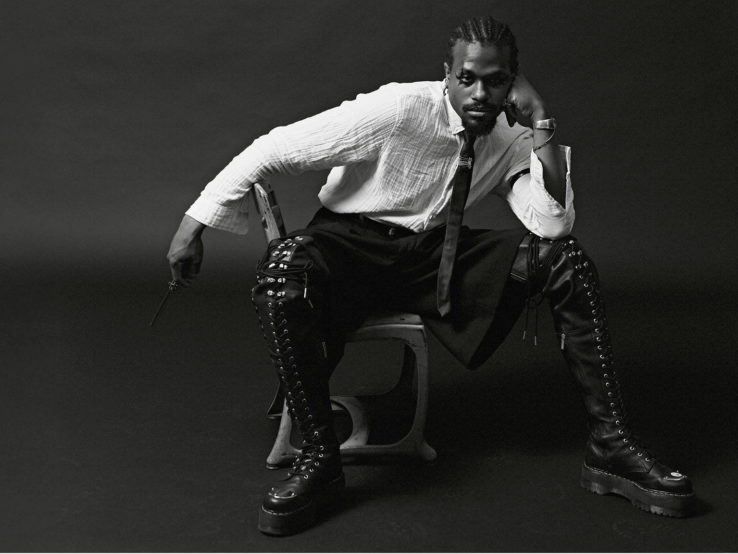M. You have created a series of pieces for celebrities and empowerment figures, each in their own way: Beyoncé, Lady Gaga, Kim Kardashian, Michelle Obama… How important is it for you to tie your vision of fashion to pop culture history?
D.R. It’s one of my priorities and passions. As I said, I love pop music, pop stars and all the people who create that culture. At Schiaparelli, we don’t advertise, we don’t pay stars to wear our clothes, they wear them because they want to and we give them something unique. That’s important to me. Now people associate Schiaparelli a lot with certain important events where pop stars wear our designs, like last year (in January 2021, Lady Gaga sang the American national anthem for Joe Biden’s inauguration ceremony; in March, at the Grammy Awards, Beyoncé broke the record for most awards won by a female artist; in July, Bella Hadid walked the steps at the Cannes Film Festival). They help create those key moments that define the times we live in.
M. You’re adventurous in your designs, as evidenced by the green dress with six-pack abs you created for Kim Kardashian. How much freedom do you have? Do you set limits for yourself?
D.R. For me, all the creations that can be a bit theatrical, spectacular, must keep the level of couture chic inherent to Elsa. That’s where my limit is. Because Elsa was always elegant, even dressed as a radish. And that’s the discipline, because if you make a six-pack abs dress that isn’t chic, any designer could make it. I think Elsa’s heritage and her work gives permission to literally go for anything, which is not the case with a lot of traditional French houses.
M. This dress has been compared to the Hulk character on social media. Can fashion be a source of inspiration for internet meme culture?
D.R. It’s quite tricky, because you can always think that someone is making a look to create a meme, and when you realise that, it breaks the whole spell. I never design with the idea of generating a meme, yet there has to be that little thing that can make the creation iconic, because Schiaparelli is all about iconography. Whether it’s the abs for Kim Kardashian, the dove on Lady Gaga, Bella Hadid’s golden lungs or the Saturn earrings created for Adele, there has to be something that people remember, just like the hook of a pop song that you can’t forget. Otherwise, it’s just a nice dress or accessory, and anyone can do that.
M. At the moment, an exhibition at the Musée des Arts Décoratifs in Paris takes us into the surreal world of Elsa Schiaparelli. What can we expect from you and this great house in the future?
D.R. My promise is to never take this job for granted. And my desire is to go further and further in my process so that each season feels like a new beginning. I want this to be a thesis on how I see the world, it’s a personal challenge I set myself, it’s my commitment.
